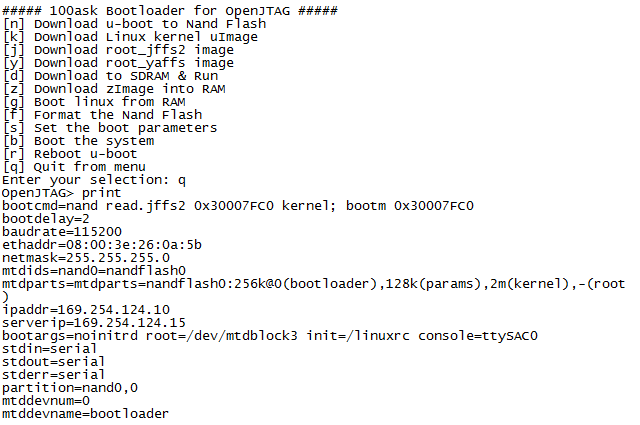NFS掛載網路檔案系統
阿新 • • 發佈:2019-02-01
1.首先將電腦本地ip、ubuntu虛擬系統ip、開發板的ip地址設在同一網段,通過路由器連線開發板和電腦,然後互ping確保三者互聯。
2.重新啟動開發板進入boot選單,按q退出選單,輸入print命令可以看到列印資訊:

其中:
bootargs=noinitrd root=/dev/mtdblock3 init=/linuxrc console=ttySAC0表示檔案系統的啟動位置,在後面步驟中將其換成在網路中虛擬ubuntu上的檔案系統即可。
3.在命令列設定ipaddr和serverip
set ipaddr 202.204.53.71set serverip 202.204 然後用save命令儲存。

4.linux-2.6.22.6\Documentation\nfsroot.txt檔案中的指示設定網路檔案系統位置如何進行設定:
When the kernel has been loaded by a boot loader (see below) it needs to be
told what root fs device to use. And in the case of nfsroot, where to find
both the server and the name of the directory on the server to 按照以上指示在命令列輸入:
set bootargs noinitrd root=/dev/nfs nfsroot=202.204.53.70:/home/lvxiao/Nfs/fs_mini ip=202.204.53.71:202.204.53.70:202.204.53.1:255.255.255.0: :eth0:off init=/linuxrc console=ttySAC0表示利用ubuntu系統上/home/lvxiao/Nfs資料夾下的fs_mini檔案系統啟動開發板,然後輸入save命令儲存,重新啟動。
注意:同時確保在核心中配置了對NFS網路檔案系統啟動的支援。

